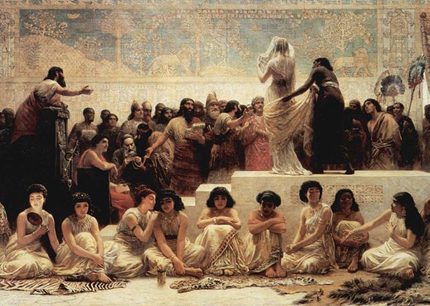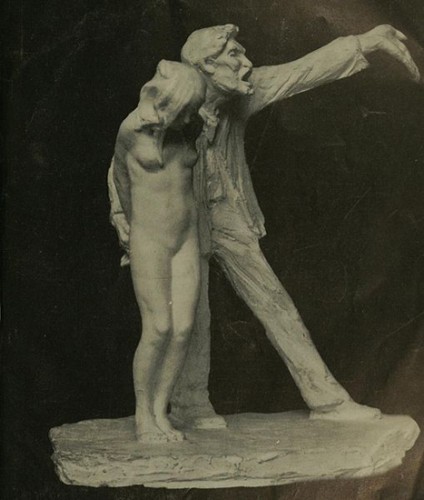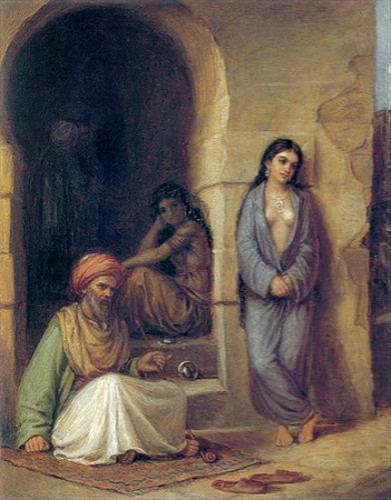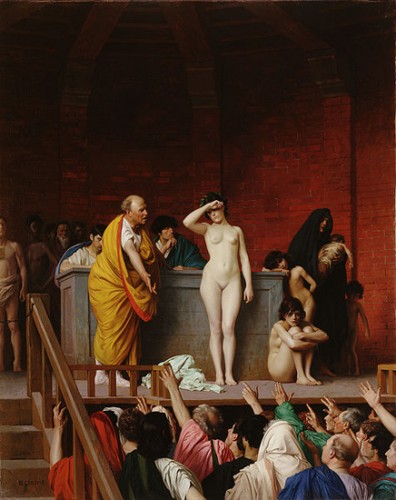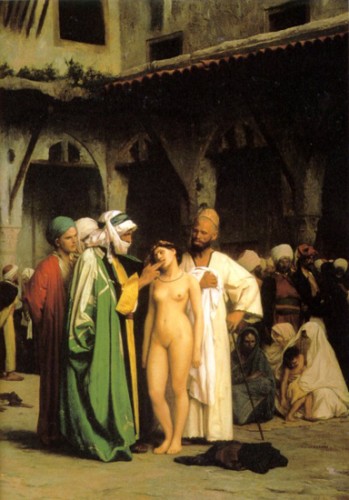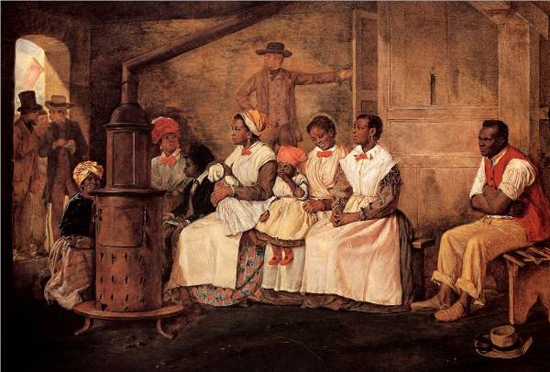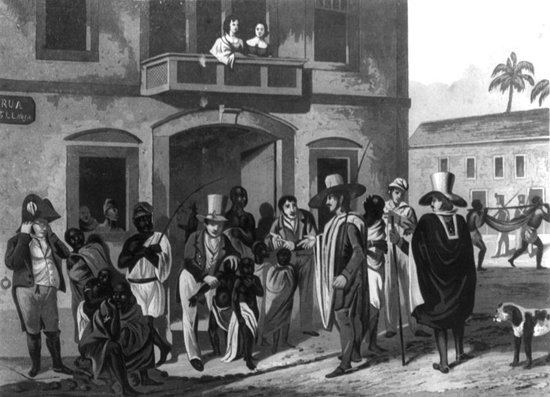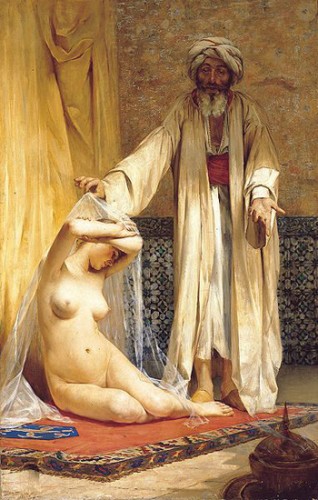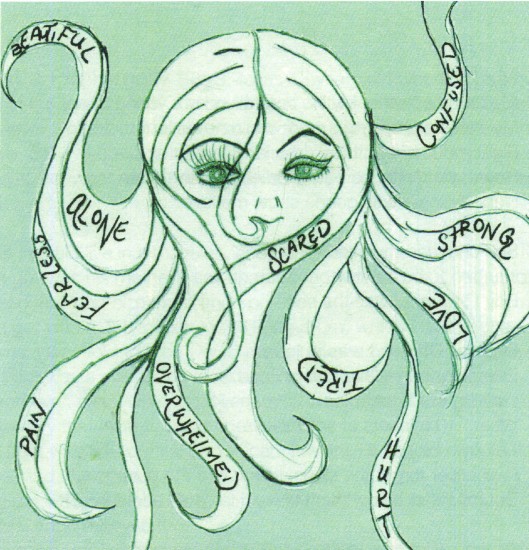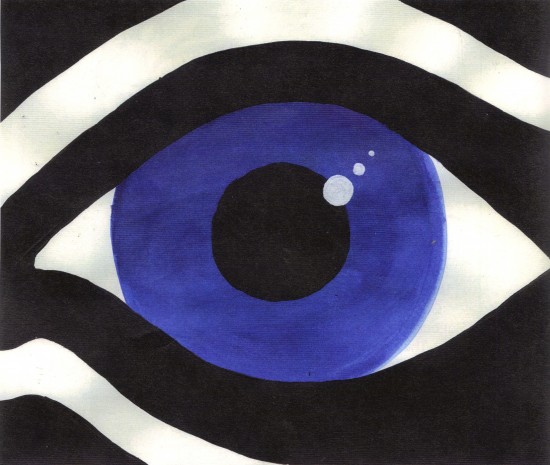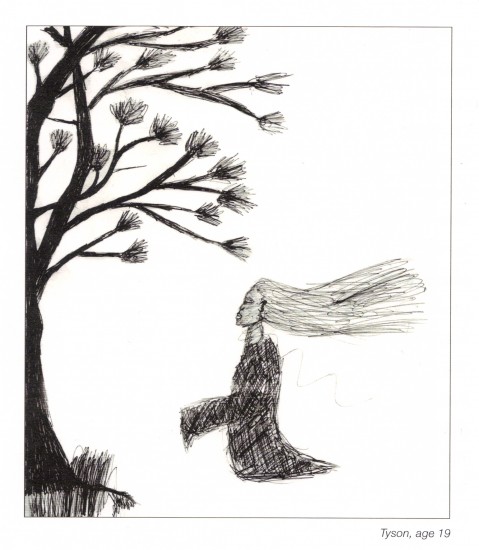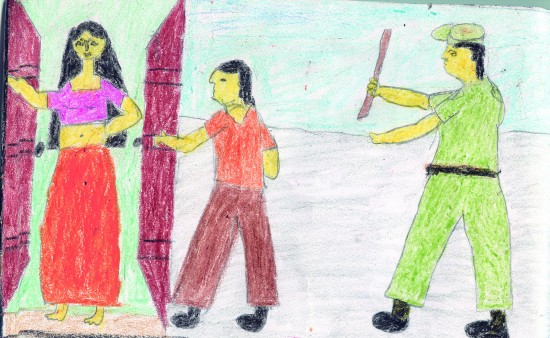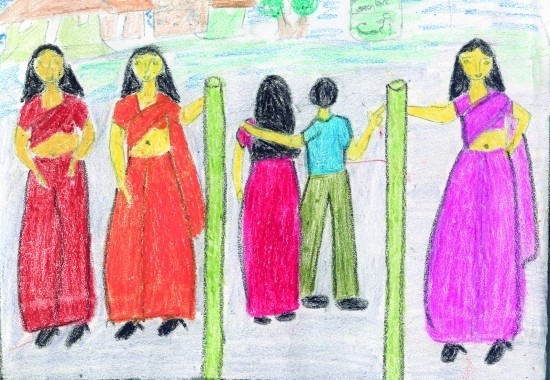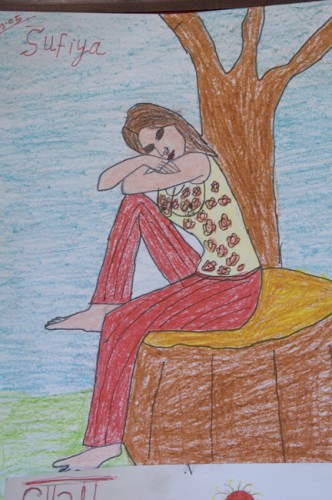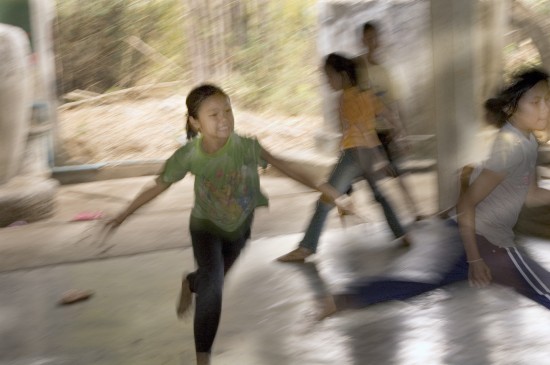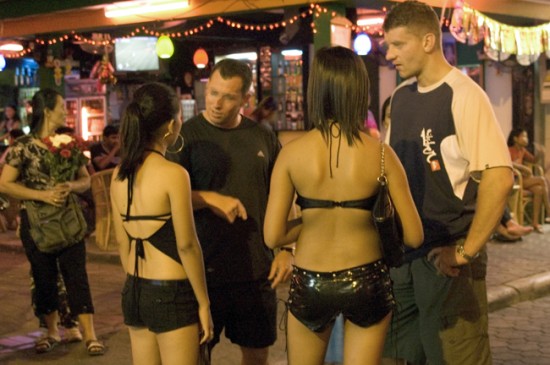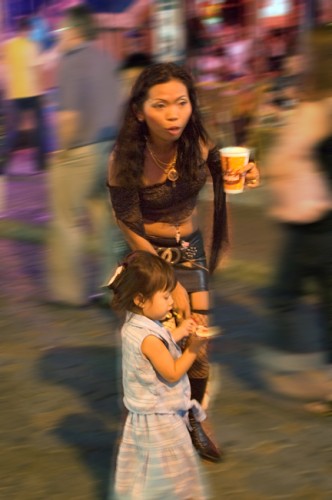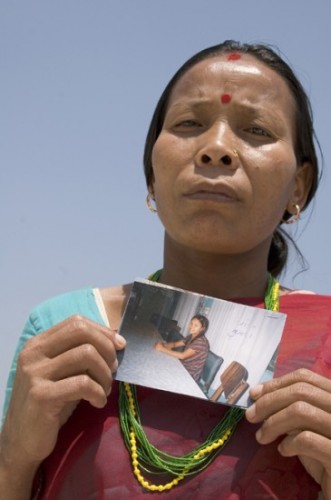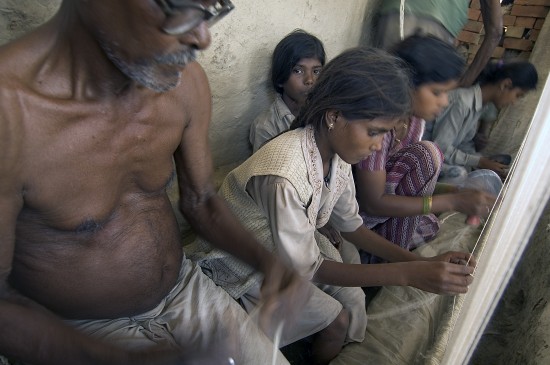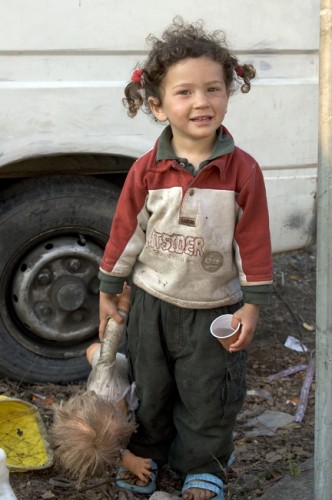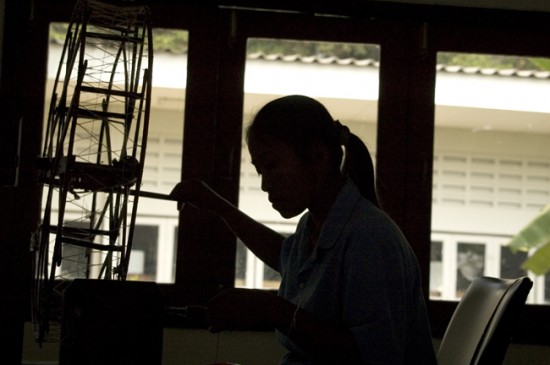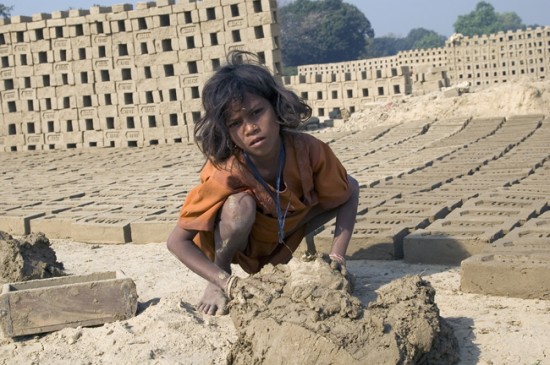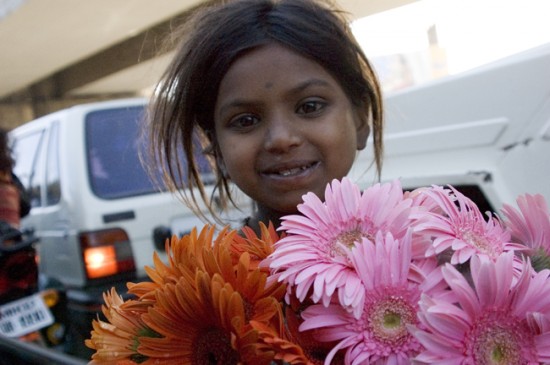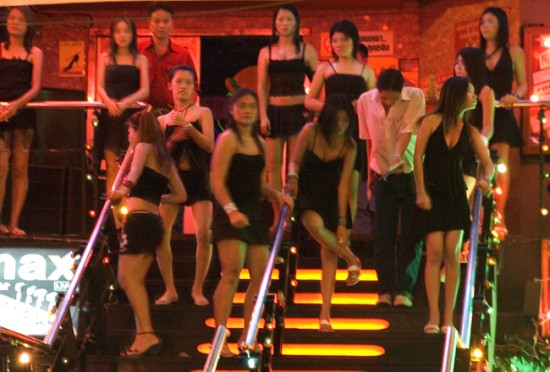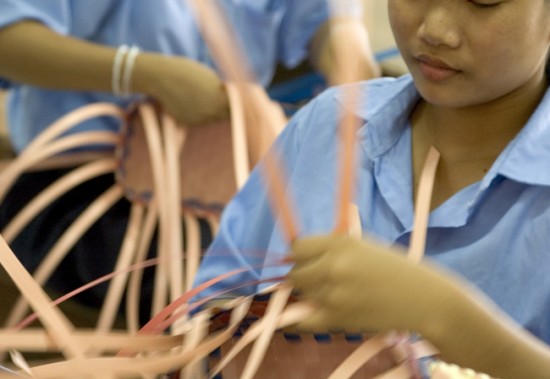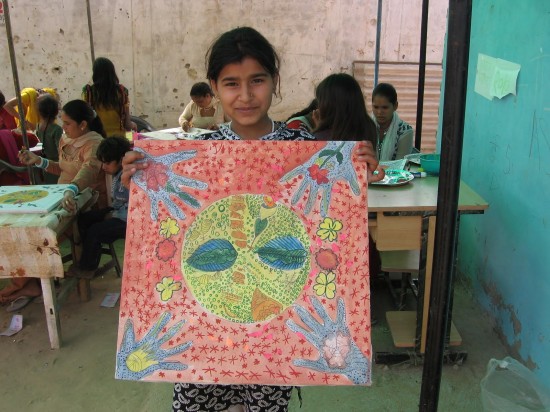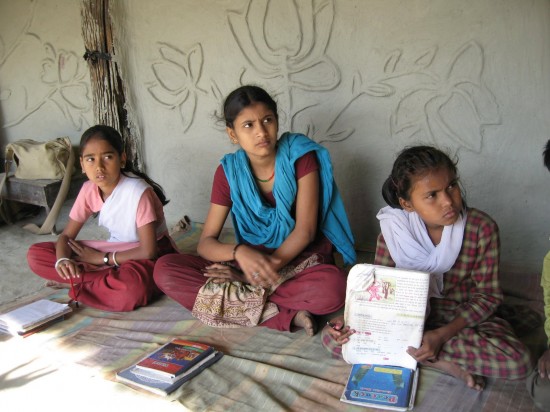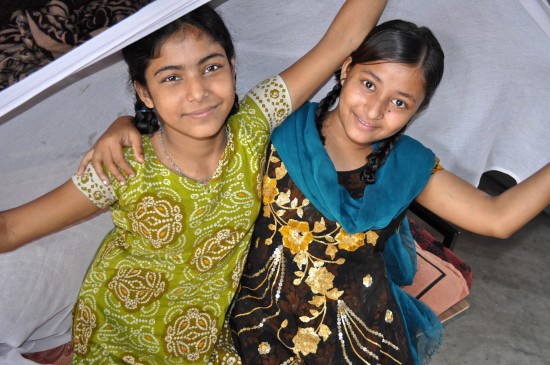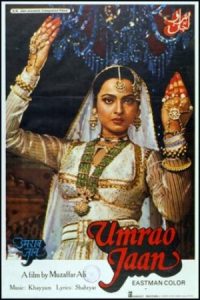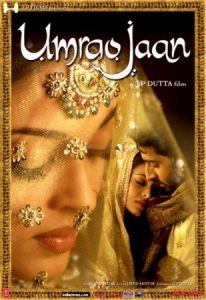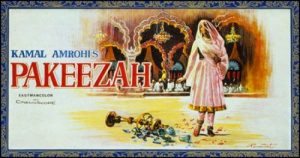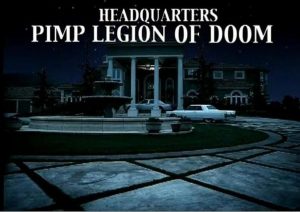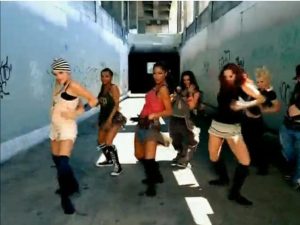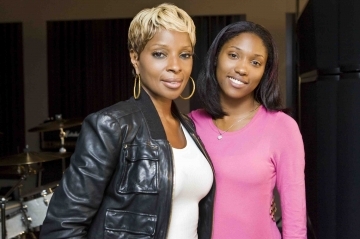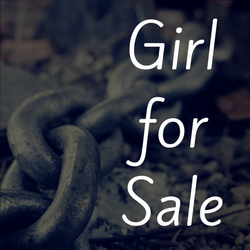
Would you sell your daughter for food? To a rape camp? Or do you turn away when you hear about such acts of brutality?
Girl for Sale is a collaborative virtual outreach exhibition about girl trafficking that interrogates and responds to the issues through poetry, art and education. It is about outrage, survival and prevention. This co-production of Girl Museum and the American Poetry Museum, launched on 31 March 2011, will continue to expand, incorporating contributions from the public and new partnerships. Broken down into two main categories, this exhibition looks at Words and Images produced as a reaction to or examination of this complicated and distressing global issue.
Words
Using words to express our feelings about situations we or others have experienced firsthand can be therapeutic, cathartic and even life altering. Words are used in this section through poetry. Poetry is one of the most powerful ways to describe a human experience. Rooted in verse, poetry is defined as writing that formulates a concentrated imaginative awareness of experience in language chosen and arranged to create a specific emotional response through meaning, sound and rhythm. In times of joy and hardship, poetry can help people to express complex emotions. We have used poetry to bring you closer to the experience of girl trafficking. The poetry included in this exhibition was written by professional poets writing about the subject and the girl survivors of trafficking. Rather than being analyzed, the works compiled here are by a range of authors and left for your own intellectual or emotive response.
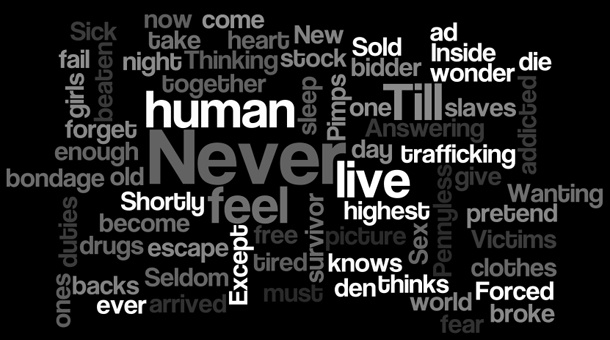
Your Rights are not Alms
Woman, your rights are not alms that you have begged for,
The suppressions of your dreams are not goals you aspire for
Free the wishes imprisoned within you
Let your talent soar in the world
Facing your problems is not difficult
Woman, your rights are not alms that you have begged for
You have yet to see how you will influence the world
You have yet to break your four walls to free the world
Your rights are not sins or crimes
Woman, your rights are not alms that you have begged for
Who turned your identity into being dependent?
You can change the story
And make yourself independent
Woman, your rights are not alms that you have begged for.
—Seema Kumari, 11
Children of the Night
“Children of the Night” is the term they used,
But the phrase alone is what left me confused.
To say the least, we all have a sad story,
But the look in our eyes makes it pretty self-explanatory,
The beatings and rapes were a part of the job,
But the “glitter and gold” is what kept us involved.
The passion and drama make it hard as well.
Our eyes are too clouded to realize
We are walking the streets of hell,
The Pimps and the
Tricks all wear a clever disguise,
But under those costumes hold many lost young lives.
Our education and morals stop growing completely,
But our breasts and our bodies seem to grow older weekly.
The tears and bruises we “charge to the game”
But the hollow hole we tried filling before, remains the same.
—Leisa, California
Yesterday
Flashback of me being raped,
Nightmares I never seem to escape.
Long nights on the streets, crying,
No place to go nothing to eat.
My only hope is prostitution,
My mind still stuck on the institution.
Locked up for years, can’t cry,
My eyes are all out of tears.
If life is this hard, death got to be easy
So why haven’t I died, swift and breezy?
This is all yesterday, so why is it still with me?
Today I try and live, when hope is gone
God is always there to give you the special bond,
But I can’t because my hero is done, fell
And my heart turned cold, and I’m living in hell
How can I let yesterday be, when it is still me?
—Tiffany, age 15
Waiting
Waiting,
Feeling here
That I am all alone.
Waiting softly,
Waiting for
Someone to call.
Knowing that
No one will speak.
Everyone is so weak,
They fall.
And no one comes,
Inside my feelings,
I hear shadows
On the ceiling.
They protect me
From the meaning
And the sounds of
No one screaming.
For the reason
I am waiting,
For the phone
To start ringing. Waiting.
—Octavia, age 16
Long Way to Go
Saturday night down on the strip,
I’m dodging the two P’s: Police and Pimps.
Street lamps and headlights shine like spotlights aglow
The night is still young and I got a long way to go.
Out of the corner of my eye I see,
Lots of other young girls trying to catch a date just like me.
Young and restless we are;
Anxious to see another van, truck or car.
Competition is strolling down every block,
Tricks have the pick of the litter these girls are coming in flocks.
Police drive by and they don’t really care,
They say stupid things like, “I’ll give you 5 bucks to see your underwear”.
Often we have nowhere to go, no kind person
To see that we are caught in the system,
We are struggling victims, without options or much choice
We are silenced, and our strife has no voice.
—Jennifer, age 21
I Remember
I remember who I really am
The gentle and caring person that lives deep within
The one afraid to come out, for fear of being used again
I wonder when the day will come when I can let the “image” go
The day when I will no longer care if someone called me ‘hoe’
The day I can truly be me, and let my spirit free
So the world can see me for who I really am
The side of me that shines
The friendly and compassionate person I used to be
The choices I have made have shaped who I have become
Never will I regret anything I have ever done.
-Jennifer, Oakland
My Life
My life is hard, my life is not easy
My life is not like the wind,
My life is not breezy.
My life is hell to me,
My sadness, my depression, my love-life, is hell
Don’t you see.
My life has haters who hate boys,
Who think they ball.
Sometimes I think I’m short,
Sometimes I think I’m tall.
I don’t know what to do with my life,
Oh my God I need to give my best friend a call.
—Alicia, age 11
Lost in Dark Depression
Lost in dark depression,
Not knowing where to run.
I opened the windows to my soul
To see what I could learn.
I swept up depression,
Scrubbed the sadness and the hurt,
I put it all in trash bags
And set them by the curb
I found, stashed in a corner
Tucked high upon a shelf,
A treasure chest of knowledge
That I could love myself.
And wherever my future takes me
I know that I will win,
Because I opened the
Windows to my should,
And let the light shine in.
—Calesha, age 19
Why?
Why am I here, why?
Why did he do it, why?
Why must they judge me, why?
Why do they talk about me, why?
Why don’t they like me, why?
Why did I do it, why?
And why must people put a barrier up
Against me because of what I did?
Why? Why? Why?
—Lakeisha, age 15
I am inside the room
Looking outside the tiny window of my room,
I see the world as a light of bliss and think …
Is there any scene which is more beautiful than this?
Anywhere in this world?
There are meadows all around bedecked with the golden paddy grains …looking ravishing.
There are the trees inundated by the lovely tunes of the birds.
There are beautiful lovely friends around.
The birds are all flying high in the sky spreading their wigs…
And I?
I am sitting inside the room.
—Sandhya Parbat, 11
Owned
I am owned by silence possessed by others slavery denied in the highest places.
—Larry Jaffe, 2010
I Am So Lost
I’ve been lost for a while
Hiding behind jokes and smiles.
I know that’s what everyone sees when they look at me.
If they only knew the thoughts in my head,
How lonely I feel inside like I’m almost dead.
Time passes and I suppress the depression inside,
That’s all I can do because I won’t let myself
Cry
—Jennifer, age 21
And to the Little Ones
Swiped from her village sold for a dime by poor parents to a rich global market Taka’s 10-year-old bones rattle with fear. Heart? bound to earth – chained. Beaten down to size in small back rooms Spirit broken by westerners who promise the world and leave her a lump of mud. No breath… No breath… Can’t breathe in this tomb. Taka’s humanity her dignity her soul is battered and bartered on the black market for a dime. And pundits predict her body will be found in a ditch in an alley some – day. Vacant eyes wander her neighborhood She is “Sold!” for a dime bag by her crack head momma to suits and briefcases with Jersey plates Takisha’s 10-year-old bones rattle with fear. Stolen from school and dreams and friends. Her lifeless body puts food on the table She eats the devil’s dinner And her humanity her dignity her soul vanishes. No breath… No breath… Can’t breathe in this toxic corner of the world. And pundits predict Takisha’s vacant body will be found in an ally or a trash can before her 18th birthday. And thus says the Lord, “Come from the four winds, o breath! And breathe upon the slain! That they may live!” That they may live! That they may run and play and lay in the streets and look up at the stars That they may dream of romance and significance and peace for their families and their people. That they may breathe and stand and live… And to Taka and Takisha to their rattling bones to the little ones who bear God’s image The Lord God says, “Breathe…” “Stand…” “Live…” —Lisa Sharon Harper, 2009
Poetry Resources
Images
The answer to the question of ‘What do we want from art?’ is continually evolving. Worldwide, there are thousands of responses. Many are problematic. Is this from a lack of understanding or not trusting our own eyes? It is very hard to misinterpret a painting of naked girls on an auction block, unless you want to believe it is something other than the obvious. Historically, we seem to demand less from art. We want beauty and familiarity, and will readily forgive scenes of violence, sexual exploitation and perversion as ‘of its own time’. However, ethics and morality did not suddenly spring forth in the 21st century as newly invented, so to not interrogate imagery that celebrates the sale of people as commodities is a bit naive. We have assembled imagery from several genres, but mainly from what is known as Orientalist. This was a label given to works from the late 18th and throughout the 19th centuries that romanticized the ‘East’ for a ‘Western’ audience who had never been there. The predilection for imagery that depicts girls and women for sale and in harems is evident and disturbing.
Babylonian Marriage Market, Edwin Long, 1875, Oil on canvas, Royal Holloway and Bedford New College, WikiCommons. This painting of girls being sold off as wives at an auction was painted in 1875. An historical picture, it was influenced by Herodotus ‘Histories’. We see the painting from behind the stage. We are not in the crowd, but we can see behind the scenes. There is a line of women all waiting to be auctioned off. Their white clothing contrasts with the darker clothes of the crowd, setting them apart as pure and virginal.
The White Slave, Abastenia St Ledger Eberle, 1913, Plaster, Location unknown, WikiCommons. This statue caused controversy when it was first shown. The child in the statue represents child prostitution. Eberle produced many pieces as a form of social protest after ‘The White Slave’. Child Prostitution, at the time of this statue, was known as White Slavery. The positioning of the child, as her hands are held behind her back graphically illustrates her entrapment and prevents any freedom. The man who holds her is shouting out, shouting out perhaps her price or her age.
Slave Girl, John William Waterhouse, 1872. Oil on Canvas , Private Collection, www.johnwilliamwaterhouse.com. This 1872 oil painting shows a girl looking forlorn and standing by a door. The man sitting down on the rug seems to be the slave owner. His authority is shown by the look on his face; he’s inviting you to make an offer. The girl in blue is standing listless; she has no choice over her fate, and neither does the girl sitting behind her.
Slave Auction, Jean-Leon Gerome, 1884, Oil on canvas, The Hermitage, St Petersburg, WikiCommons. The theme of nakedness runs through all these images. In this painting, the girl being auctioned is stood on a stage in front of all those who are bidding for her. Not only is she without clothes but the other slaves behind and to her side are naked and stare out despondently at the crowd. The girl at the centre has her arm up and looks away, unable to look at whoever will buy her.
Sale of a Slave Child, Vasily Vasilyevich Vereshchagin, 1871-1872, Oil on canvas, Tretyakov Gallery, Moscow, WikiCommons. Completed between 1871 and 1872, the painting shows the sale of a young child. Two men debate the price as the haggling involves jewellery that is held up. The child stands proudly in front of the men while a third man holds the door.
The Slave Market, Jean-Leon Gerome, 1867, Oil on canvas, The Clark Art Institute, New York, WikiCommons. The French artist Gerome painted this in 1867. It depicts a slave girl being checked out as if she was an animal. Her teeth are being examined by prospective buyers while her robe is being held behind her by her master. Her nudity shows her standing in society. Her clothes can be taken off her at anytime. She is just something to be sold and bought while others look on.
The Slave Market, Constantinople, Gustave Boulanger, 1882, Oil on canvas, Private Collection, WikiCommons. Boulanger painted this around 1882. It shows a group of people being auctioned off. Their similarity indicates perhaps a family. No member is exempt from the shame of being stripped and shown. From the little boy to the woman who cannot bear to look at the crowd looking at her. The auctioneer/slave owner is eating his lunch with a casualness that is almost obscene compared to what is actually going on.
Slaves waiting for sale: Richmond, Virginia, Eyre Crowe, 1861, Oil on canvas, Private Collection, WikiCommons. The English artist Eyre Crowe spent 6 months in America from 1852 – 1853 accompanying the author Thackery on a lecture tour. While there he encountered slavery and the trade of humans that was to provide the subject matter for future sketches and paintings. This particular painting highlights an auction and the people up for sale. Children are not exempt. A little girl sits on her mother’s lap but we don’t know if they’ll be separated. The women sit clean and proud but not knowing what would happen.
Slave Market at Rio de Janeiro, Edward Francis Finden, 1821-1823, Illustration in: Journal of a voyage to Brazil 1824, WikiCommons. This engraving was made during trips to Brazil between 1821 and 1823 and was published in a journal detailing the trip. The difference between slaves and owners is clear from clothes, stance and the colour of skin. At the forefront is the auctioning off of slave children as well as some adults. In the background, slaves can also be seen going about their daily routine.
The Merchant’s Pearl, Alfredo Valenzuela Puelma, 1884, Oil on canvas, Museo de Bellas Artes, Santiago, WikiCommons. Painted in 1884, the image of the naked woman looking away as she is exposed is a dramatic one. Her master is showing her to us, the viewer with his left hand out, perhaps to indicate money. The girl is completely exposed and she looks away maybe in shame or perhaps defiance. She won’t meet our eyes.
Contemporary Art
The contemporary art included in this exhibition has been created by the girls themselves, some with the assistance of an agency or photographer. As a part of rehabilitation, education and creative expression, these works provide what is missing in the historical works—the girl’s voice. These are intended to give a sense of hope. Definitely not as glamourous as the Orientalist paintings, but the truth never is.
Documentary
Since the invention of the medium, photographers have documented most of the tragic and horrific ways people treat each other, either as it happens or the fresh aftermath. The lives of trafficked girl in brothels, in sweatshops, in rehab facilities, and in safe houses are a part of this visual record. The images selected for this section, which includes Work, Sex and Recovery, have been taken by professionals and others by volunteers with NGOs. Most all of them reveal the genuine human reality, without gloss or illusions, of the extreme hardship for these girls and their world.
At risk. Kay Chernush for the U.S. State Department, 2005. A quote from an Indian Supreme Court ruling on child labor is painted in big letters on a wall of this school for rescued children, proclaiming: “Every child has the right to food, play, education, and love.” But out of 1,000 raids in one district of Northern India over the past five years to free enslaved children like this one, only 40-50 traffickers were convicted and fined.
Play. Kay Chernush for the U.S. State Department, 2005. Children in Northern Thailand play at a day school where U.S. Government funding helps protect girls at risk of being trafficked.
When in Bangkok… Kay Chernush for the U.S. State Department, 2005. Customers/exploiters come from all over the world. Legalized or tolerated prostitution is a magnet for sex trafficking. The U.S. Government considers prostitution to be “inherently demeaning and dehumanizing,” and opposes efforts to legalize it. The PROTECT Act makes it illegal for an American to sexually abuse a minor in another country. Perpetrators can receive up to 30 years in jail.
Street walker/baby sitter. Kay Chernush for the U.S. State Department, 2005. Around midnight in Southeast Asia, a woman looks after a friend’s child while the friend is with a customer/exploiter. So-called “second generation” children of women abused in prostitution are at great risk for sexual exploitation and sex trafficking because the demand for children is high.
Have you seen my daughter? Kay Chernush for the U.S. State Department, 2005. This desperate mother traveled from her village in Nepal to Mumbai, India, hoping to find and rescue her teenage daughter who was trafficked into an Indian brothel. Nepalese girls are prized for their fair skin and are lured with promises of a “good” job and the chance to improve their lives. “I will stay in Mumbai,” said the mother, “Until I find my daughter or die. I am not leaving here without her.”
Carpet Weavers. Kay Chernush for the U.S. State Department, 2005. Carpet weavers like this family are usually Dalits or “Untouchables,” the lowest caste in South Asian society. In many instances, the children are helping a family member, or someone else in their village who has fallen into debt. An offer is made to place a loom in their hut so they can pay off their debt, but this only ensures their enslavement, sometimes for generations.
Gypsy girl. Kay Chernush for the U.S. State Department, 2005. A Roma (gypsy) child finds herself on the side of a road in northern Italy, ironically wearing a shirt that proclaims, “Outsider.” Her family, which fled the ethnic turmoil in Bosnia, is always on the move. Poverty, discrimination, and social customs combine to make Roma children vulnerable to trafficking.
In the sweatshop. Kay Chernush for the U.S. State Department, 2005. This woman in her early 20s was trafficked into a blue jean sweatshop, where she and other young women were locked in and made to work 20 hours a day, sleeping on the floor, with little to eat and no pay. She managed to escape and was brought to the government-run Baan Kredtrakarn shelter in Bangkok. After a few days, when she felt safe enough to tell her story to the director, the police were informed and they raided the sweatshop, freeing 38 girls, ages 14-26.
Making bricks. Kay Chernush for the U.S. State Department, 2005. A 9-year-old girl toils under the hot sun, making bricks from morning to night, seven days a week. She was trafficked with her entire family from Bihar, one of the poorest and most underdeveloped states in India, and sold to the owner of a brick-making factory. With no means of escape, and unable to speak the local language, the family is isolated and lives in terrible conditions.
Weaving. Kay Chernush for the U.S. State Department, 2005. Children like this young girl are prized in the carpet industry for their small, fast fingers. Defenseless, they do what they’re told, toiling in cramped, dark, airless village huts from sunrise until well into the night.
Young girls sell flowers in Mumbai traffic. Kay Chernush for the U.S. State Department, 2005. Street kids, runaways, or children living in poverty can fall under the control of traffickers who force them into begging rings. Children are sometimes intentionally disfigured to attract more money from passersby. Victims of organized begging rings are often beaten or injured if they don’t bring in enough money. They are also vulnerable to sexual abuse.
For Sale. Kay Chernush for the U.S. State Department, 2005. Like slaves on an auction block waiting to be selected, victims of human trafficking have to perform as they are told or risk being beaten. Sex buyers often claim they had no idea that most women and girls abused in prostitution are desperate to escape, or are there as a result of force, fraud, or coercion.
At the shelter in Bangkok. Kay Chernush for the U.S. State Department, 2005. Victims of trafficking and other forms of abuse find protection and support at Baan Kredtrakarn, a government shelter in Bangkok which can care for up to 500 women and girls. While at the shelter, they are counseled, prepared for testifying in court, and given vocational training in hair-dressing and traditional Thai crafts such as basket-weaving, flower-making, spinning, and weaving. The shelter’s goal is to help reintegrate them into society so that they can lead productive lives.
Mandalas, AAWW Community Center at Najafgarh, near New Delhi, 2010. © Apne Aap, Kolkata. Community center art therapy workshop where the girls made mandalas that represent their souls and the color and life they have inside of themselves.
Lessons, Uttri Rampur community center, Forbesganj, Bihar. 2010 © Apne Aap, Kolkata. In addition to art and dance therapy, other activities are held at the community centers, including after school tutoring sessions and non-formal education courses.
Farida & Karishma after a dance therapy class at the KGBV in Simraha, India. Photographer: Morgan Metcalf, 2010. I volunteered with Apne Aap for 3 months in 2010, teaching English and life skills to a group of fifty girls at the KGBV (girl hostel/ school) in Simraha, Bihar. I lived with the girls in their hostel 4-5 days of each week, so I ate meals with them, prayed with them, and participated in activities with them. The girls so enjoyed the dance therapy sessions (a two-day class with teachers who travelled from Delhi), and it was a wonderful cathartic and growing experience.
Pop Culture
Trafficking, violence and the exploitation of girls has been in the popular consciousness for centuries. Recent visual explorations of the subject in film, television and music videos have yielded a wide range of results. In the media, the line between condemnation and fascination, like for so many aspects of human behavior, continues to be blurred. Consider this section on film and music videos about the various pop culture approaches to girl trafficking.
Film
Girl trafficking has been the subject of many films in entertainment and educational, documentary formats. While it is hard to believe that this topic could be considered entertaining, it is surprisingly common and almost taken for granted. This section includes discussions of both Hollywood and Bollywood style approaches.
Hollywood, Bollywood, and Everywhere in Between: The Commercialization of Girl Trafficking
Sex sells. Child trafficking, however, is about much more than young girls being pushed into the sex trade against their will. Let’s face it, we live in a society enamored of sex and violence, so the story about the young girl who slaves away in a sweatshop making your organic cotton T-shirts just doesn’t have the same titillating effect or profit generating ability as the young girl put out on the streets to sell her barely pubescent body. Did you hear the collective corporate sigh of relief? Take even a cursory look at child-trafficking films; the vast majority of them are about young girls sex-trafficked in countries where the people are overwhelmingly brown and poor. We can break them down into 2 general categories:
- Sexploitation
- Great White Hope/Great White Redemption
Sexploitation? Yes, just as Blaxploitation films in the 70s were hailed as both a token of black empowerment by some and accused of perpetrating horrible stereotypes by others, so too, go child-trafficking films. In one fell swoop, the child sexploitation film condemns child trafficking, while making sure there’s just enough sex and violence involving girls-just-old-enough to make us squirm with a disturbing mixture of curiosity, arousal and disgust.
Stop for a moment and consider what the real victims of trafficking might think about these films, our curiosity and the ability of some Hollywood director to line his pockets with them. As we praise the cinematic achievements of some ‘daring’ director, actual survivors are violated once more by the watchful gaze of a mostly white audience that exclaims such meaningless platitudes as, “What wonderful acting!” Next we have the Great White Hope/Redemption film. You’ve seen this ‘hero’ saving ‘others’—slaves, Chinese, Native Americans [insert victim here]. In the child-trafficking milieu, he appears in places like Russia/China/Malaysia/Thailand/[insert county here]. While in that other place, he discovers child trafficking (nearly always of a sexual nature), and embarks on a crusade to save her/him/them. Ultimately, he triumphs over evil/ignorant locals and/or the decaying remnants of colonial/imperial hangers-on. Thankfully, we can all breathe a sigh of relief and metaphorically pat ourselves on the back for bearing witness. However, the story focuses on our hero—not the girls. They simply exist as the props and even the background for his superior morality. If they are lucky, just before the credits role, they are bundled off to Somebetterplace. In reality, child trafficking effects girl and society all over the world. It has long and lasting consequences, is rarely wrapped up so neatly and is not exclusively a product of poverty. While you don’t hear about girls from Upper East Side trafficked into the sex trade, no one is exempt. Think about that the next time you buy your movie ticket and that extra large tub of popcorn.
Millions Cry Like Ameeran and Sahibjaan: Girl Trafficking in Hindi Cinema
If there is any mainstream Hindi film that has portrayed the plight of a girl forced into prostitution and touched the hearts of many, it is Muzaffar Ali’s Umrao Jaan. This film was released in 1981 and is based on the novel by the same name, written by Mirza Hadi Ruswa in 1905. The story is set in Lucknow, one of the largest cities of North India. The story revolves around Ameeram, played by actress Rekha, who is kidnapped and sold off to a brothel at the age of 8. She is adopted by a family who teaches her dance, poetry and music—only to make her suitable for entertaining the wealthy men of Lucknow. Ameeran ends up becoming a courtesan with a long list of admirers. She is not only misunderstood by her lover, but is also raped by her childhood friend. Her last days are spent in Lucknow without the gloss and the glamour of a courtesan’s life. Ameeran, or ‘Umrao’ (meaning noble) as she was fondly called by her patrons, is shown completely resigned to her ill fate.
Umrao Jaan was remade in 2006 starring former Miss World Aishwarya Rai in the lead role. This version has a song with the lyrics: “Ab Jo Kiyo Ho Daata Aisa Na Kijo, Agle Janam Mohe Bitiya Na Kijo!” “Whatever you did God please don’t do it again, Oh God, don’t birth me as a girl child!” Kamal Amrohi’s Pakeezah, released in 1972, revolves around Sahibjaan, played by the legendary Bollywood actress Meena Kumari, who is born to a courtesan named Nargis. Nargis dies soon after giving birth to Sahibjaan and her sister Nawabjaan takes charge of this baby girl. Growing up with courtesans and prostitutes around her, she has no other choice than to become a beautiful courtesan herself. There is a song in the film where Sahibjaans complains: “Humri Na Maano Toh Sipaiya Se Poocho,Jisne Bazariya mein Cheena Dupatta Mera, Inhi Logon Ne Le Lina Dupatta Mera.” “If you don’t believe me ask the policeman who snatched away my veil of modesty in the market, These are the same people who took away my veil of modesty.”
Dupatta or the head scarf symbolizes modesty, respect, shame or shyness. These are considered to be the essential virtues of any woman. She is saying that the custodians of society, such as the judge and the police, are themselves mocking a woman’s right to live with respect and dignity just because she is a courtesan. Both Umrao Jaan and Pakeezah are considered as classics of Hindi cinema. Trafficking of girls and women is a sensitive issue and when a filmmaker decides to work with it, he or she not only shoulders the responsibility of portraying the issue as aesthetically as possible, but also makes an attempt to create a realistic awareness about this vice in society. The world does not become dark and void just because we have closed our eyes. Because it is difficult for us to take in this reality, it does not mean that inhuman acts like selling children with the intention of sexual slavery do not exist.
Music Videos
Many musicians in recent years have written songs about runaways, teen prostitutes and trafficking. Some of their own initiative, others in response to campaigns, most notably MTV’s Exit. While these songs attempt to confront the reality of trafficked children, there are hundreds of songs and music videos that arguably promote the objectification of women and girls as well as promote prostitution. Read our critique of such videos and MTV’s Exit campaign.
Hypocrisy, thy Name is MTV
However, the word ‘pimp’ has entered mainstream culture as a verb. ‘Pimp my Ride’ was a program produced by MTV and popularly distributed all over the world. The idea of pimping inanimate objects relies on the widespread acceptance of the general concept and tacit approval of pimping girls. The most well known pimp in America was also produced by MTV— Snoop Dogg. He became famous for, amongst other stunts, showing up to the 2003 MTV Music Award with two women on leashes. 50 Cent is also an MTV production. His song ‘P.I.M.P’ touts, “Bitch choose with me, I’ll have you stripping in the street, put my other hoes down, you get your ass beat.” And the video shows him surrounded by women attending a meeting of the Pimp Legion of Doom, with Snoop Dogg as the group’s leader. This video was nominated by MTV as a Top Rap Video for their awards in 2004.
The degradation of women in lyrics and videos in the culture of music television is not solely the domain of hip hop or of men. The value of women, as claimed by the Pussycat Dolls, is on a scale of hotness. In this MTV world, aimed at a tween and teenage audience, women’s sexuality and their bodies themselves can be bought or sold, as demonstrated by Nelly throwing money at women in one of his videos. In 2005, MTV launched the EXIT campaign—an inititative, “about freedom — about our rights as human beings to choose where we live, where we work, who our friends are, and who we love.” To highlight the problems of trafficking, they have used celebrity endorsements, videos from bands that portray girl trafficking and created educational programs and activities. Some of the videos are quite good for what they are and there is a great deal of information and many links provided. But MTV makes no explanations or excuses for its completely out of balance and mixed message media parenting model. While the intention may appear noble and well meaning, a TV channel that actively promotes videos by so-called pimps campaigning against human trafficking is at the least hypocritical, if not extremely socially irresponsible. Can MTV be taken seriously when advertisements for EXIT are sandwiched between Lil’ Wayne’s hoes and Nelly’s pimp juice?
EXIT is not the first such campaign to use music to raise awareness about trafficking. In addition to the videos created for EXIT, Ukranian band Alibi wrote a song for UNICEF to highlight trafficking, Take No Glory wrote ‘Beautiful Slave’ and Peter Buffet did ‘Blood into Gold’. Sinead O’Connor remade her song ‘This is Mother To You’ with Mary J. Blige to support the efforts of GEMS (Girls Education and Mentoring Service). They even featured a girl, Martha B, who had survived trafficking and went through the GEMS program in the song. All of these videos can be found in the Music Videos gallery. So on the one hand, there is a growing awareness, however slow, of the problem of trafficking in the popular and mainstream media. On the other hand, MTV sponsoring a campaign like EXIT is a bit like a pimp running a shelter for abused women—hypocritical and in it for the $.
Trafficking Maps
Is trafficking going on where I live? Human trafficking occurs all over the world. In North America, there are over a dozen major trafficking hubs. This means that people, primarily girls and women, are brought from all over the world—by boat, airplane or car. The traffickers use false passports and paperwork so that the origin and identities of the girls are concealed or lost. They are then on sold to others who distribute them, just like any other commodity. Click the map to learn about global trafficking hubs.
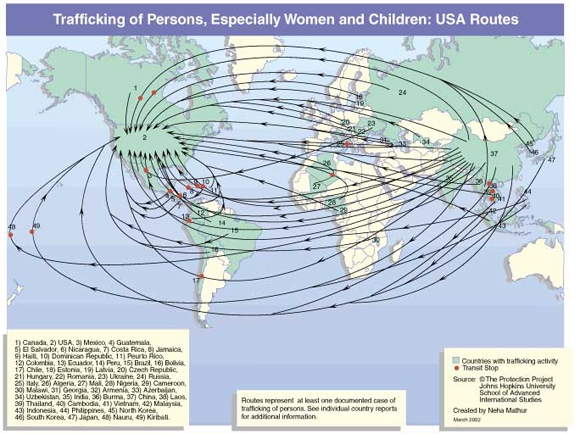
Advocate
After learning about girl trafficking from this exhibition, we don’t want to leave you all fired up to take action with no guidance. You too can raise awareness and participate in stopping this terrible trade. It is important to feel your are making a difference, so starting out at the local level is the best. Equally, if you wish to help on a more global scale, there are many virtual ways of being active too. We encourage you to act and let us know what you are doing or are planning to do for this cause. Send in event announcements and pictures for us to share and inspire others.
Local
Here are some ways you can learn more about the experience of human trafficking as well as teach students in your community. Our Girl For Sale Education Guide is designed for young people aged 13-17 and can be used in classrooms or at home to have them write from the point of view of a trafficking survivor. Click on this link to download the printable PDF.
Global
NGOs
There are many NGOs operating throughout the world that focus on human trafficking, some specifically dealing with children and girls. If you know of additional organizations not listed, please let us know.
Amplify Your Voice – Social Issues Blog
Association for Women’s Rights in Development (AWID)
Coalition to Abolish Slavery and Trafficking (CASTLA)
Coalition Against Trafficking in Women – International (CATW)
Family Violence Protection Fund
UNGEI Girls Count: A Global Investment and Action Agenda
Girls Education and Mentoring Services (GEMS)
International Organisation for Migration
No to Slavery – Prevention of Human Trafficking in the Russian Federation
The Working Group on Girls (WGG) and International Network for Girls (ING)
World Concern Asia’s “I am a Child” Program
Resources
Books
Non-Fiction
Kevin Bales, Disposable People: New Slavery in the Global Economy. University of California Press, 1999. Exhaustive research showing that some 27 million people are currently enslaved around the world. Bales is the considered world authority on slavery.
Kathleen Barry, Female Sexual Slavery. New York University Press, various editions. A landmark study of prostitution and violence against women.
Ryan Bishop and Lillian S. Robinson, Night Market: Sexual Cultures and Thai Economic Miracle. Routledge, 1998. Details how the Thai economic “miracle” is being paid for with women’s lives.
Ko-Lin Chin, Smuggled Chinese: Clandestine immigration to the United States. Temple University Press, Philadelphia, 1999. Mr. Chin details snakehead recruitment of illegal immigrants, standard and not so standard routes of entry into the U.S. and what happens upon arrival. Very current material.
Mary Crawford, Sex Trafficking in South Asia: Telling Maya’s Story. Routledge, 2009. A professor of psychology and women’s studies at the University of Connecticut, Crawford tells the story of one girl, Maya, and the travails she experiences as a sex trafficking victim. As moving as it informative, this book will change the way one thinks about the root causes of sex trafficking – a product of gender and class discrimination.
Drs. R.Estes and N. Weiner, Commercial Sexual Exploitation of Children in the U.S., Canada & Mexico. University of PA School of Social Work, 2001.
Melissa Farley, Ed., Prostitution, Trafficking & Traumatic Stress Disorder. Haworth Press, 2003.
Kathryn Farr, Sex Trafficking: The Global Market in Women and Children. Worth Publishers, 2004. One-stop, accessible reading to educate yourself about global sex-trafficking; although Farr does not include how prostitution plays a major role in sex-trafficking.
Rita Giaretta, Slaves No More. George Hicks, Comfort Women. W.W. Norton & Company, 1994. Trafficking of Korean women for the pleasure (and inhuman abuse) by Japanese military during WWII. The most extensive record available in English of survivors of this horror.
Shelia Jeffreys, The Idea of Prostitution. Spinfex, Melbourne, Australia, 1997.
Siddharth Kara, Sex Trafficking: Inside the Business of Modern Slavery. Columbia University Press, 2008. Kara, a former investment banker and executive, uses theoretical economics and business analysis to propose measures that could eradicate sex trafficking by undermining the profitability of the illegal activities associated with the crime.
Nicholas D. Kristof & Sheryl WuDunn, Half the Sky: Turning Oppression into Opportunity for Women Worldwide. Knopf, 2009. An instant bestseller from the award-winning New York Times columnist and his wife, this beautiful and inspiring book reminds us all that without women and their contributions that the world would be incomplete.
Laura Lederer, Human Rights Report on Trafficking of Women and Children: A Country-by-Country Report on a Contemporary Form of Slavery. School of Advanced International Studies, Johns Hopkins University, Washington, D.C.
Rachel Lloyd, Girls Like Us: Fighting for a World Where Girls Are Not for Sale, an Activist Finds Her Calling and Heals Herself, Harper Collins, 2011.
Victor Malarek, The Johns: Sex for Sale and the Men Who Buy It & The Natashas: Inside the Global Sex TradeArcade Publishing, 2005.
Somaly Mam, The Road of Lost Innocence Spiegel & Grau, 2008.
Dr. Jill Murray, But, I Love Him: Protecting Your Daughter From Controlling, Abusive Dating Relationships, Harper Paperbacks, 2001. How a teenage girl learns to submerge her personality to her boyfriend Such behavior sets the stage for entrapment by pimps and traffickers.
Silvana Paternostro, In the Land of God & Man: Confronting our Sexual Culture. Dutton, New York, 1998. A must read book–the Rosetta Stone on Latin American patriarchy.
Pornography: Driving the Demand in International Sex Trafficking. Captive Daughters Media, 2006. A collection of essays from today’s leaders in the fight against sex trafficking, this book explains using captivating and detailed case studies how the demand for pornography ultimately feeds the desire for prostitution and sex trafficking.
Jody Raphael, Listening to Olivia: Violence, Poverty and Prostitution. Northeastern University Press, Boston, 2004. Listening to Olivia is a major contribution to our understanding of the commercial sex industry in the United States.
Benjamin Skinner, A Crime So Monstrous: Face-to-Face with Modern-Day Slavery. Free Press, 2008. Awarded the 2009 Dayton Literary Peace Prize for nonfiction.
Morrison Torrey & Sara Dubin, Eds. Demand Dynamics: The Forces of Demand in Global Sex Trafficking. International Human Rights Law Institute, DePaul University, Chicago, Illinois. 2003 Demand Dynamics conference report.
Fiction
Stephen Long, Karmic Ties: A Novel of Modern Asia. Medicine Bear Publishing, Blue Hill, Maine, 1999. Graphic, fictional account of Bangkok’s sex industry.
Patricia McCormick, Sold. Hyperion Teens, 2006. For young adults, a compelling fictionalized but factual tale of an innocent Nepali village girl’s year in a Calcutta brothel until her rescue by an American from an non-profit organization.
TV & Film
Films
The following films and documentaries deal in some way with the issue of trafficking and its consequences. If you have another to add, please send in the title.
Bucharest Express—Chuck Portz. 2003. Enticed falsely by offers of job opportunities as dancers and models, women are trafficked from the Balkans to become sex slaves in Turkey (feature length).
Capital Letters—2004. An illegal immigrant brought to Ireland by traffickers is forced into prostitution and befriended by a small time hood.
Fields of Mudan—Steven Chang. 2004. A young girl is forced into sex slavery in this moving short film. She befriends another girl in the brothel and dreams of freedom with her mother in America (23 minutes).
The Great White Hope—also a play of the same name (won 1969 Pulitzer Prize in drama), about a black boxer in the early 20th century who falls in love with a white woman and must deal with both racism from the white community and ostracism from the black community. Also deals with the Mann Act.
Holly—Fictional story about a man in Cambodia who tries to stop a Vietnamese girl from sex trafficking.
Lilya 4-Ever—Lukas Moodysson. 2002. At 16 in the former Soviet Union, Lilya is left by her mother, and, penniless, turns to prostitution and the horrifying life it entails (109 minutes).
Memoirs of a Geisha—Based on the book of the same name, the changing of a cultural lens can change how we view exploitation.
Salaam Bombay—Drama about a runner for a tea shop in a neighborhood filled with prostitution and drugs.
Slave—Tatiana thought she was going to America to be an au pair girl, but is trafficked into a life of sexual slavery. A chance meeting with Diana, an actress in a play about trafficking, changes both their lives.
Slumdog Millionaire—Features child trafficking. About an orphan from the Mumbai slums, who tells the story of his life, including the girl he loved and lost, encounters with gangs, and living on the street.
Svetlana’s Journey—Michael Cory Davis, Hristina Dimatrova. 2005. Based on a true story, this documentary/drama describes the experience of a young Bulgarian girl sold by her adopted parents for 10,000 euros to another family for sexual exploitation.
Trade—Marco Kreuzpaintner. 2007. A girl from Mexico City is abducted into modern day slavery and is to be sold in an internet auction, and her brother goes on a quest to rescue her (119 minutes).
Documentaries
These films are real life based, rather than dramatizations or fictional accounts.
Anamika (The Nameless)—Documentary. Rajesh Touchriver. 2005. Exposing the issue of child commercial sexual exploitation in India (trafficking women from Andhra Pradesh to other parts of India), this 26 minute documentary delves into the very real product of the sex trade, including both physical and mental destruction.
Anonymously Yours—Gayle Ferraro. 2002. Four women’s stories are weaved together in this 90- minute documentary about Burma’s sex trafficking trade.
Bangkok Girl—Jordan Clark. 2005. 19-year-old Pla tells of her experience managing to avoid prostitution while working in a bar in Thailand since the age of 13, and how with time she will inevitably be forced into the trade (42 minutes).
Born Into Brothels—Zana Briski, Ross Kauffman. Taking on a very different vantage point than most films on the subject, Briski and Kauffman’s 85-minute documentary focuses not on the prostitutes in India, but their children. 2005 Best Oscar for Feature Documentary. Bought and Sold—Gillian Caldwell. 1999. Produced and Directed by WITNESS Director Gillian Caldwell, this 42 minute documentary investigates the illegal traffic of women in the former Soviet Union, as well as the groups that are helping them.
Call + Response—Musical examining modern day slavery.
Cargo: Innocence Lost—Michael Cory Davis. 2008. A “compelling documentary,” this film includes interviews from the nation’s leading authorities on trafficking, and from victims of modern day slavery themselves (75 minutes).
Chameli—About girl trafficking and HIV/AIDS; was made to “sensitize Nepali communities and to challenge the government to confront the girl trafficking problem.” The Children We Sacrifice—Grace Poore. 2000. Poore’s documentary delves into the many aspects of incest, ranging from cultural attitudes to effective treatments for survivors, and focusing on social and cultural resistance in South Asia (61 minutes).
The Day My God Died—Andrew Levine. 2003. Tells the story of the countless girls sold into the sex trade in Bombay, the brave souls working to defend them (55 minutes). Narrated by Tim Robbins.
Dying to Leave—Chris Hilton and Aaron Wolf. 2004. This 104-minute two part documentary explores the issue of human trafficking, and tells the story of a girl trafficked to Australia then sold into prostitution for three years.
Enslaved and Exploited: The Story of Sex Trafficking in Canada–Online documentary on human trafficking in Canada, featuring UBC Law Professor and Liu Institute Faculty Fellow Benjamin Perrin. Four Years in Hell—Documentary about a Nepalese girl sold to a brothel in India. Girls from Chaka Street—Antra Cilinska. 1997. In a short 15-minute documentary, the tragic story of Eva, a prostitute in Latvia, and many other underage girls like her is told. Girl Trafficking—Manushi for Sustainable Development. 1994. Trafficked from the rural areas of Nepal into India for commercial sexual exploitation, this documentary-drama outlines the very real ordeal of many young girls, as well as the social ostracization they face with their resulting HIV/AIDS infection. Used as a training tool by NGOs.
Highway to Hell—Meera Dewan and Niraja Rao. 2000. Exploring the sex trafficking trade between Nepal and India, this documentary also takes on the unique perspectives of male clients in addition to those of the trafficked girls and their families (38 minutes).
I Just Keep Quiet: The Voices of Human Trafficking—An educational overview of human trafficking in the United States, including interviews with victims, law enforcement and social service providers.
Not for Sale: The Documentary—Based on a book of the same name. No 556, 13th Lane, Kamathipura, Mumbai—Short documentary about a raid on a brothel in Mumbai. “Director’s Note: The rescue operation shown in No. 556 was done at the request of enslaved girls. They sent word through customers begging for police or NGO intervention.” The Price of Youth—Short documentary, again about the Nepalese/Indian sex trade. Also shows efforts to fight forced prostitution and rehabilitate its victims.
Remote Sensing—Ursula Biemann. 2001. This feature length film explores the impact of U.S. Military presence in South East Asia and European migration politics on the global sex trade.
Sacrifice—Ellen Bruno. 1998. This 50-minute documentary explores the economic, social, and cultural forces behind the sex trafficking of girls for debt-bondage from Burma to Thailand.
The Selling of Innocents—Documentary about the Nepalese/Indian sex trafficking trade. Won a 1997 Emmy Award in News and Journalism.
Sex Slaves (The Real Sex Traffic)—(PBS Frontline) Ric Esther Bienstock. 2006. One man provides a hidden-camera view of commercial sexual exploitation in Russian and Turkey by speaking with the traffickers, victims, and government officials in order to find and buy back the freedom of his trafficked wife (40 minutes).
Sisters and Daughters Betrayed—Chela Blitt. 1995. Focusing on Thailand, Nepal, and the Phillipinnes, this documentary delves into the social and economic factors driving sex trafficking, as well as the consequences for those women affected (28 minutes). So Great a Violence: Prostitution and Trafficking and Global Sex Industry—Coalition Against the Trafficking in Women. 2000. This inspirational film calls on those with a voice to use their power to create political demand for the ending of sexual exploitation.
Stop the Traffick—Emily Marlow. 2001. Set in Cambodia, Marlow’s documentary explores the aftereffects of Khmer Rouge’s brutal rule, and how it has impacted the vulnerability of children in the region to the sex trade (30 minutes).
Trading Women—David A. Feingold. Trading Women documents the sex trafficking trade in China, Thailand, and Burma, depicted as not just a local, but international problem (narrated by Angelina Jolie). Trafficked—Luigi Acquisto. 2005. Acquisto’s 60-minute documentary explores the sex trafficking trade in SE Asian and Australia through former Australian Federal Police Officer Chris Payne.
Trafficking Cinderella—Mira Niagolva. 1994. After the Berlin Wall fell in 1989, there has been a marked increase in the sex trafficking from the former Soviet Union to Western Europe and North America, explored by this 48-minute film.
Turning a Corner—Salome Chasnoff. 2006. In this 60-minute documentary, the stories of those affected by the sex trade in Chicago and their efforts to raise awareness for necessary policy reforms are revealed.
Very Young Girls—Focuses on American children forced into prostitution in America. 83 minutes.
The Virgin Trade: Sex, Lies and Trafficking—Filmmaker Stuart Kershaw embarks on a journey through Thailand’s red light districts to investigate the world’s largest sex industry. This exploration of international sex tourism turns expectation on its head, in an expedition that is as brutal in its honesty as it is unexpected in its conclusions…
Television
These televisions programs are either one in a series or special productions. Feel free to send in episode titles with subject matter related to girl trafficking.
Human Trafficking—(Lifetime Ministries) Christian Duguay. 2005. This two-part mini-series starring Mira Sorvino and Donald Sutherland depicts the sex trafficking trade in Eastern Europe.
Law and Order: Special Victims Unit (2010 Season, 12 Episode 4, Merchandise)—A 15-year-old girl is hit by a car and killed, and it is ruled a homicide. There were signs the girl was being starved and had recently given birth. It’s found that the girl had fallen victim to a human trafficking ring.
- (2011) Ashley E. Remer (head girl & curator), Julie Anne Young, Samantha Bradbeer, Katie Weidmann, Briar Barry, Miriam Musco, Shruti Gautam, Darlene Deas, and Vanessa Jorion,
- (2018) Monique Brough, Lexi Burrows, Emily Clarke, and Tiffany Rhoades.
The American Poetry Museum is dedicated to celebrating poetry, promoting literacy, fostering meaningful dialogue, encouraging an appreciation for the diversity of the American experience, and educating local, national, and international audiences through the presentation, preservation and interpretation of American poetry. The APM goes beyond traditional museum functions to provides a place for communities to gather and participate in meaningful dialogue on issues that are of interest and importance to their lives. This new approach to museum programming emphasizes active learning and engagement rather than passive reflection. Our team: Jon West-Bey (director & curator), L’Rai Mensah Thanks to Renaissance man, Eric Scott, the webmaster of the original exhibition website.

